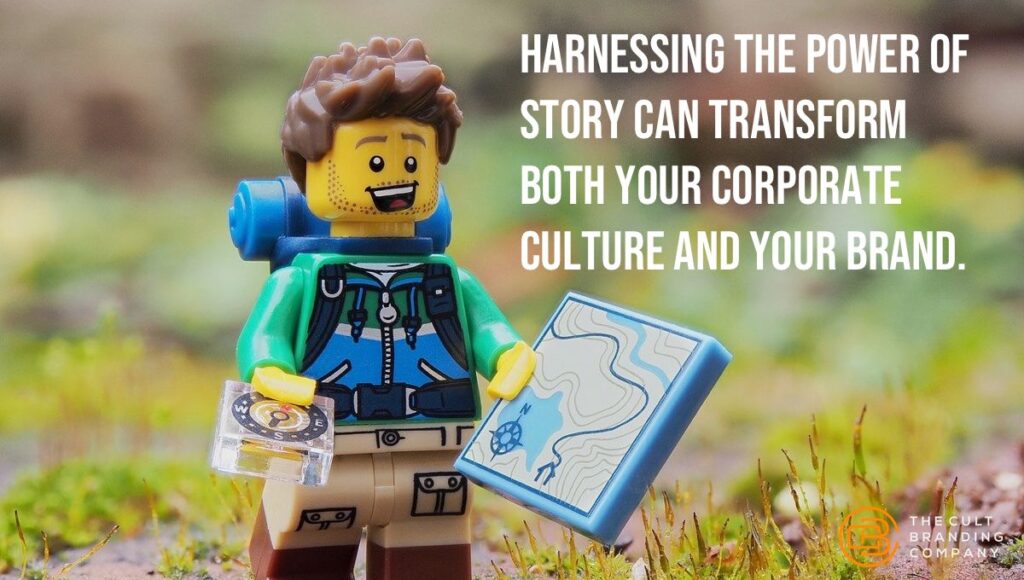26 Oct Harness The Power of Story

“Good morning city!”
Emmet Brickowski was a construction worker, your everyday guy. He followed printed instructions on how to fit in, have everyone like him, and always be happy.
But Emmet had a greater destiny: to become a Master Builder. Master Builders don’t have to follow instructions. Inspired by others, they create from what’s inside of them.
If you don’t know Emmet, you may have heard of The Lego Movie. The Lego Movie premiered in February 2014, grossing $468 million worldwide at the box office.
Sales at Lego rose to $4.4 Billion with net income up 15% in 2014. The privately held, Denmark-based toymaker surpassed Mattel as the world’s largest toy company last year, largely due to the film’s success.
How did Lego dominate the competitive toy market?
Lego told a compelling story that resonated with the brand’s biggest fans. That’s the secret.
The Human Brain on Story
Our brains are wired to understand and retain stories, not facts and logic.
While logic activates the rational left brain, stories trigger the imaginative properties of the right brain. Engaged in our imagination, we experience stories as if they are happening to us.
Good stories move people. Good stories take us on a journey, allowing us to feel differently. And, these feelings can change our perspective, often leading us to action.
The Psychology of Story
There are numerous reasons why story is a powerful medium for communication, influence, and marketing:
- Stories evoke powerful emotions in a safe environment because we know there is a resolution at the end.
- Stories provide mental models and metaphors to reveal how we think and how we create meaning from our experiences.
- Stories have the power to connect us to universal truths and symbols bigger than ourselves.
- Stories transcend our individual differences, highlighting a common ground that enables us to connect and understand ourselves.
- Stories define and teach social values.
Nothing can move people to action better than a good story.
Your Company on Story
Marketing isn’t the only department that can leverage the power of story. Outperforming businesses find innovative ways to use stories to inspire their corporate culture.
Nike, for example, began designating their executives as “corporate storytellers” as early as 1970. These storytellers shared tales of the company’s history, helping employees understand their company’s past. It also helped them shape their future.
These corporate storytellers might tell the story about how Nike founder Bill Bowerman poured shoe rubber into his family’s waffle iron, giving birth to Nike’s famous waffle sole.
Tales of discovery can inspire a culture of innovation. Stories of how others have accomplished their goals can move people to realize their own objectives.
The Opportunity Story Brings You
Stories are powerful because they cut to the heart of what matters. Stories are about us. That “us” can be your team, your organization, or your customers.
As a leader of your enterprise, stories can help you communicate your vision, inspire your team to greatness, and attract legions of loyal customers.
Lego’s success demonstrates what happens when you move beyond a transactional mindset—simply trying to get people to buy more stuff—and inspire others with a meaningful message through the power of story.
Lego stands for imagination. They promote possibility.
Harnessing the power of story can transform both your corporate culture and your brand.
What does your brand celebrate? What story can you start sharing?

